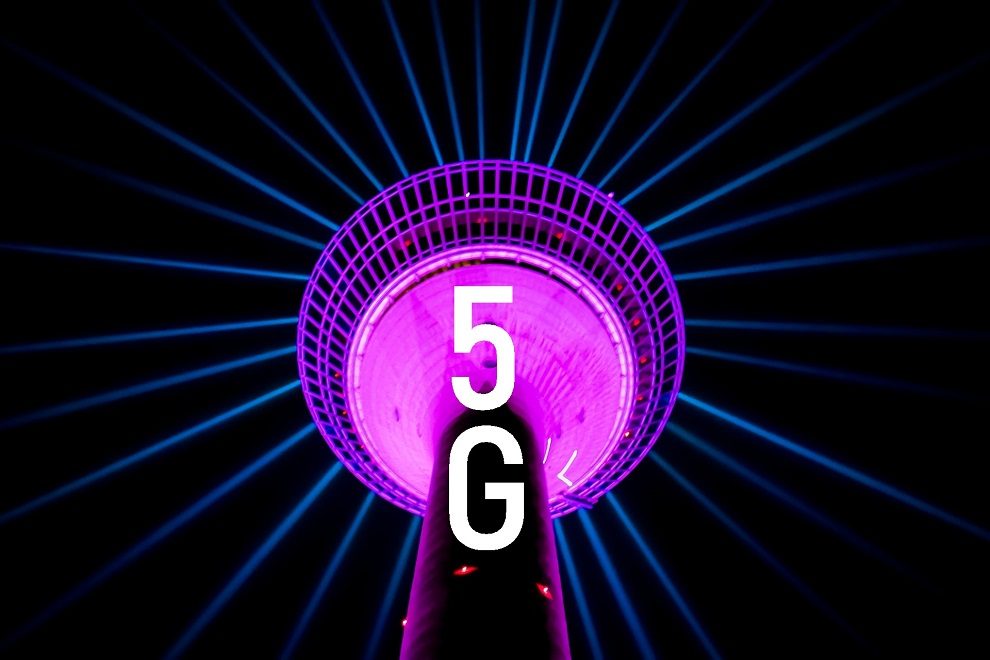 The use of mobile technology is getting wider, and along with it the need for faster and reliable connectivity. 5G, the next generation of wireless technology has been designed to cater the evolving requirements of wireless network connectivity. It has capabilities like very high transmission speeds (more than 1Gbps), reliable network availability and low latency communications (1millisecond), which provides superior service experience when compared to its predecessor 4G networks. 5G also features technologies like wider radio spectrum, massive MIMO antenna arrays, ultra-dense networking, software-defined networking (SDN), network functions virtualization (NFV), edge computing, network slicing, etc.
The use of mobile technology is getting wider, and along with it the need for faster and reliable connectivity. 5G, the next generation of wireless technology has been designed to cater the evolving requirements of wireless network connectivity. It has capabilities like very high transmission speeds (more than 1Gbps), reliable network availability and low latency communications (1millisecond), which provides superior service experience when compared to its predecessor 4G networks. 5G also features technologies like wider radio spectrum, massive MIMO antenna arrays, ultra-dense networking, software-defined networking (SDN), network functions virtualization (NFV), edge computing, network slicing, etc.
5G technology is witnessing a large scale deployment and adoption around the world and the Middle East region especially GCC has been on the forefront. Enhanced mobile broadband (eMBB) have emerged as one of the initial 5G service that provides high data transmission rates; previously available only through fiber connectivity. Another common 5G based service is fixed wireless access (FWA), which allows the deployment of fiber-like connectivity speeds in underserved areas, where business prospect of fiber based connectivity is not viable. Unlike the previous generations of wireless network, 5G has a significant potential beyond the traditional consumer voice and data services. It is expected to propel wide range of industrial uses cases on the back of its enhanced bandwidth and reliability to support several mission-critical applications. Also, 5G is expected to underpin digital transformation across several industries and support development of completely new and diverse mix of digital services leveraging artificial intelligence, virtual reality, industrial Internet of Things (IIoT), analytics, and drones among others.
5G based leased line and dedicated network for enterprises:
A leased line is an exclusive connection between users’ premise to the local exchange and is not subjected to contention by other users. It guarantees symmetric download and upload speeds as well as provides users with complete control. Broadly there are two types of leased lines – internet access leased line and point to point leased line. A point to point leased line allows enterprises to connect two or more of its locations together over a dedicated line. While, internet access leased line helps enterprises connect to the network, instead of connecting two dedicated points. In terms of the underlying technology, it can be segmented into fiber, DSL, MPLS and microwave leased lines.
5G connectivity is capable of facilitating enterprise with leased lines deployment while ensuring an uninterrupted and enhanced experience. The major benefit offered by 5G technology is the ability to run multiple dedicated virtual networks on the same physical network infrastructure using end-to-end network slicing. Each network slice has their own unique properties – protocols, network architecture, and security settings. Moreover, each partitioned logical/virtual networks can be customize and configured easily, which allows enterprises to have their own private mobile network tailored according to their needs and requirements. This, in turn, allows 5G private lines to enhance agility and at the same time offer greater end-to-end (E2E) assurance.
While leased line connectivity in most of the enterprises is majorly dependent on fixed-line technologies, 5G can provide a superior alternative solution offering enhanced speed and greater mobility. The 5G standard – 3GPP release 16 aims to facilitate 5G for substituting private wired Ethernet, LTE, and Wi-Fi networks and also utilizing 5G capabilities especially for application in the industrial environment. 5G’s ultra-reliable low-latency communication (uRLLC) is able to connect controllers, actuators, switches, and sensors, at latency and reliability levels corresponding to wired connections. While, the massive machine-type communications (mMTC) of 5G is enabling industrial-scale IoT and provides extremely high densities; connecting as many as million IoT sensors and devices per square kilometer.
Comparing with microwave and fiber private line, 5G FWA have less cost, fast deployment time, and better latency. 5G FWA based private line for businesses can be used as a new branch line for connecting locations with no fiber coverage and also in remote areas where construction and cabling is difficult. It can also be useful in mobility application cases and in scenarios where faster service provisioning is required. Upgrading from low-speed private line and replacing existing microwave and fiber based back-up links are other important areas where 5G FWA can offer a superior service experience.
Prerequisite of leased lines and advantage of 5G:
- Availability: 5G network provides significantly high availability; enabling end user with the access of leased line connectivity all the time. Network slicing through 5G can help prioritize a particular application and minimize the downtime. Also, ensuring controlled maintenance and redundancy of critical elements is important.
- Cost saving and ease of deployment: 5G leased lines reduce the cost of engineering as compared to microwave and fiber based leased lines. It also enables faster service provisioning or delivery, through plug-and-play support in the customer premise equipment.
- One network for all services: 5G leased lines are easily scalable and can cover different scenarios through one network, leveraging network slicing, SDN, and NFV. It also enables operator with the ease of offering integrated service and tariff package to improve revenue.
- Reliability: 5G improves the reliability of leased lines drastically. 5G’s ample network coverage along with high capacity has the capability to transmit data or traffic with high success rate and within a stipulated time period.
- Quality of service: Leased line quality of service (QoS) parameters mainly includes throughput, jitter, latency, packet drop, etc. 5G leased lines on dedicated spectrum are capable of controlling each of these parameters, ensuring tailored system performance and better QoS.
- Security: 5G based dedicated leased line connectivity and private network provides full end-to-end security, ensuring information and infrastructure are protected from cyber threats or manipulation. Creation of multiple 5G sub-networks can separate different group of users and further enhance network security.
Network as a service:
Scaling computing servers along with seamless interconnections are persistence challenges for MNOs and data centers providers. This, in turn, has resulted increased demand for additional network capacity as well as improved and robust network solutions. 5G network along with SDN, NFV functionalities have given rise to Network-as-a-Service (NaaS). It is capable of addressing specialized and on-demand connectivity requirements for factory floors, autonomous vehicles, IoT, and connecting remote branches and sites among other. It facilitates enterprises to manage their costs efficiently as they have to pay only for the consumed networking services. Also, enterprises can substantial benefits from reliability, availability, recovery and ease of management through the outsourcing of network infrastructure.
Potential use cases and opportunity for industries:
Industry 4.0 has been introducing wide spectrum of technologies and use cases. The focus is on improving the agility and efficiency of production processes through connected ecosystem, automation, and data exchange. This in turn is providing significant opportunity for 5G to provide seamless connectivity requirements across industry verticals. Along with enhanced service experience in terms of capacity, speed, latency, and more; implementation of 5G leased lines will also be helpful in reducing the use of wired connections, and hence drive mobility. 5G based leased lines and virtual private network, combined with cloud services has the potential to develop new use cases across industry verticals. Transportation and logistics hubs like shipping ports, airports, and warehouses, manufacturing facilities, oil & gas sites, and smart campuses like hospitals, universities, stadiums and others are expected to garner the benefits of 5G based leased lines at the early stage. Advanced use cases include and are not limited to: 5G CCTV, cloud gaming, cloud VR for collaboration and training, VR/AR for remote assistance, digital twins, autonomous driving, connectivity to remote branches and drones. Few uses cases are discussed below:
- Autonomous ground vehicles (AGVs) are extensively used in logistic hubs for transporting goods. These vehicles are controlled and operated remotely due to the hazardous or accident prone environment of these sites. Any delay in sending a command or receiving a response from control center can lead to injuries or significant damage to assets. 5G’s ultralow latency leased line communication can ensure precision control of these vehicles.
- Remote diagnosis is increasingly being explored by hospitals as complementary services to existing diagnostic system. Healthcare monitoring enables remote detection of patients’ health conditions. Powered by high-bandwidth and low-latency of 5G leased lines, remote diagnosis can help provide real-time data for doctors. Also, hospitals can also facilitate from virtual reality based coaching and knowledge sharing by leveraging 5G network.
- Industrial robots are gradually substituting human labor for performing repetitive tasks in industries and thus reducing the risk of injury. A massive amount of intelligence is required for proper functioning of these industrial robots. Control systems for robots in industrial environment are gradually moving to the cloud due to ease of implementation. Dedicated access empowered by 5G can facilitate connectivity between cloud based system to the robots and their controllers.
- Drones are capable of integrating various payloads, sensors, and imaging technologies. They have become imperative for several industries like oil and gas, ports, etc. with the emergence of various innovative use cases like remote inspection. High-speed internet connectivity and dedicated network slice of 5G can support efficient function of drones without any disruption.
- Intelligent building systems are mainly connected through fixed network. 5G based leased lines can empower existing intelligent building systems and improve the efficacy of video surveillance and sensing devices. Also it facilitates deployment, expansion of capacity, and adjustment more flexible.
- Security surveillance systems are being pushed by governments as mandatory requirement in many places like malls, stadiums, etc.; in order to improve safety. CCTV surveillance system needs the highest level of availability, reliability, and speed. As a result, the key enabler of intelligent remote video surveillance systems is high bandwidth and ultra-low latency 5G leased line networks. Moreover, 5G, facilitating implementation of edge computing and AI in video surveillance systems, is further transforming them into a more intelligent security monitoring solution.
- 3D visualization using AR/VR facilitates design, optimization and validation of critical processes across industries. Immersive experience provided by AR/VR systems facilitate better understanding of construction plans, building layouts, and other machine installations. While, AR/VR equipments are connected to a central application server and 5G networks using a dedicated network slice can provide a high data throughput, enabling fast delivery of pictures as well as video feeds.
- Mega events attract large number of visitors and needs additional networking infrastructure to cater the heavy traffic volume and massive demand for connectivity. 5G based leased lines could be used during such short-term requirements. 5G leased lines can also ensure secure data transmission on dedicated networks.
Opportunity for regional telcos:
5G is aggressively getting adopted across consumer as well as the business segments. MNOs have been driving the 5G adoption by rolling out 5G sites across the region. While, monetization potential of 5G is significant, MNOs will have to figure out ways to charge a premium on the back of differentiated experiences that 5G is capable of offering. Majority of the regional telcos are currently engaged in expanding their consumer 5G services portfolio. However, ongoing developments of several real-life enterprises use cases are paving new opportunities for the 5G network in the B2B space. Telcos now need to steer from consumer to enterprise centric 5G service portfolio. STC Kuwait became the first operator in the Middle East to launch a 5G connectivity service, exclusive for enterprises. Key solutions provided by the operator include dedicated data access, dedicated internet access, and on-demand services such as CCTV and Cloud PBX. While, STC in Saudi Arabia have successfully deployed the first 5G smart campus solution in the region in February 2020.
Conclusion:
The currently available connectivity solutions are struggling to cope with the market demand for more reliable and ultra-high speed connectivity. In the era of Industry 4.0, and myriads of emerging technologies, organizations will have to eventually look for alternate sources of internet that can support their business and IT requirements. The existing leased line networks aren’t efficient, scalable, and competent to deliver the aggressive demands of new use cases. 5G leased lines can facilitate enterprises to connect diversified and remote infrastructure and resolve challenges related to coverage, capacity, density, security, complex management and high operational cost. Also, additional revenue stream for operator exists in meeting demand from the end users’ customized needs in terms of data isolation and management by leveraging network slicing.












